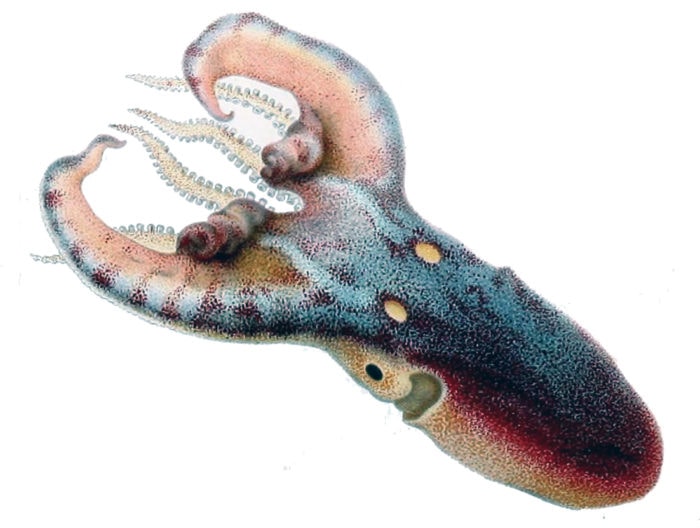The blanket octopus looks like a rainbow ghost alien

Bec Crew
Bec Crew

WE’VE GOT technicolour ghosts down there doing… whatever technicolour ghosts do, and we’re just out here living our lives. Blast that thing into space so it can finally be with its people.
Okay, fine, it can stay, but let’s take a moment to truly appreciate how bonkers this creature is.
Meet the blanket octopus (Tremoctopus violaceus), a bizarre, impressive, gorgeous feat of evolution that might actually be even weirder than it looks.
How is that even possible, you might ask? Go with me here, because there’s a lot to this “beautiful scarf of living flesh”, as one scientist put it.
First thing’s first: the most notable thing about the blanket octopus is its sexual dimorphism – a term used to describe how the males and females of many species of animals (and some plants) possess different physical characteristics beyond their sexual organs.
Sexual dimorphism can manifest in many different ways. For example, only the male pink robin is pink, and you can count the bands on the blue-banded bee to tell the sexes apart: males have five blue bands and the females have four.
Size is another common one: New Zealand’s katipo females are larger than the males (like our red back spiders), as are the female Annam flying frogs.
This is also the case for the blanket octopus, but it just so happens to exhibit one of the most extreme cases of sexual size-dimorphism known to science.
The females, which can stretch up to 2 metres long and 10 kg in weight, grow to be 40,000 times heavier and 100 times larger than the males, which are – wait for it – 2.4 cm.
Look at this little guy:

(Image credit: Comingio Merculiano in Jatta Giuseppe/Wikimedia)
Now compare it with THIS, filmed off the coast of the Philippines by diver Joseph Elayani:
“Imagine a female the size of a person and the male a size of a walnut,” evolutionary biologist Tom Tregenza told John Pickrell back in 2003, when the first ever sighting of a live male blanket octopus was reported from the Great Barrier Reef.
Now, back to the females, for obvious reasons.
The females use their fleshy cape to make themselves appear intimidating to predators. These capes are detachable in case of emergencies, which result in moments like this, when a diver encounters an octopus-less blanket:
The cape conceals the female’s tentacles, which are also conveniently detachable. In fact, when a male finally finds a female in the open ocean, he will fill one of his tentacles up with sperm like a sock, tear it off, present it to her, and then float away to die.
The female will accept this disembodied tentacle, store it in a specialised cavity in his body, and when her eggs are ready, squeeze its contents out onto them.
Detached tentacles are not only key to the blanket octopus’s reproductive success – they’re key to its survival, too. Only it’s not their own tentacles they’re waving about in a battle – it’s the Portuguese man o’ war’s.
As marine biologist, Rebecca Helm, puts it, they tear off the venomous man o’ war tentacles and “use them like little octopus nunchuks”.
Blanket octopuses are found all over the world, including off the north, east, and south-western coast of Australia, so if you’re a diver, keep an eye out for these otherworldly beauties.




